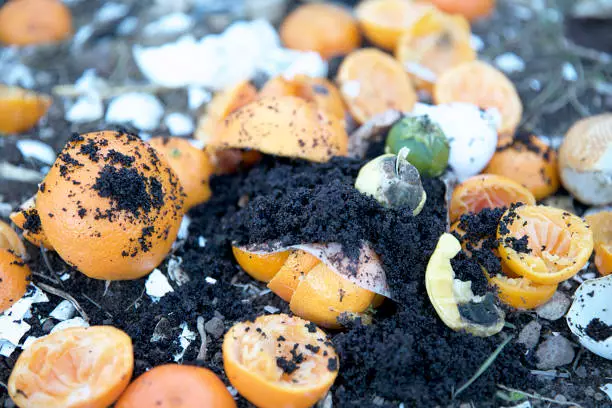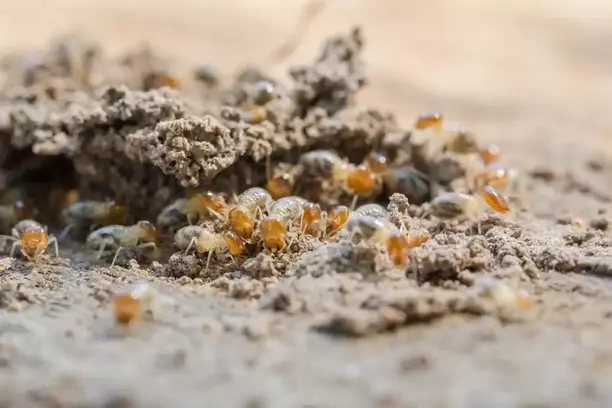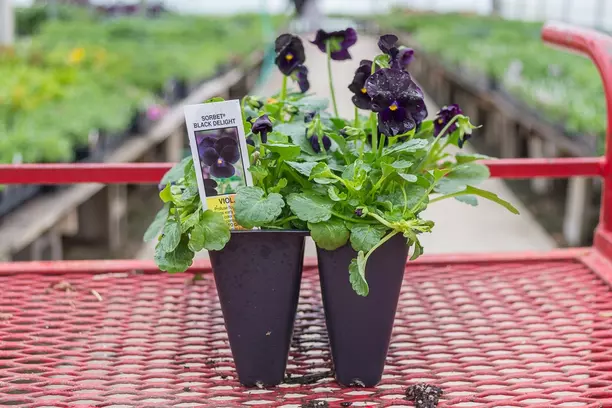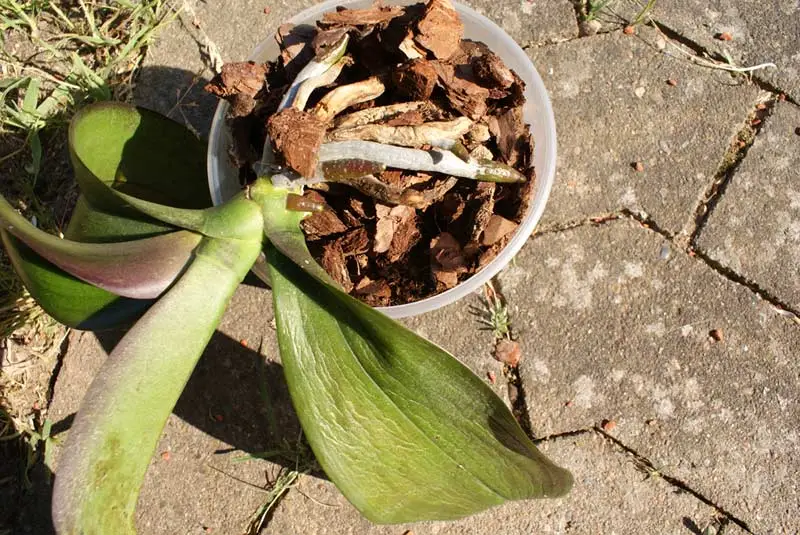Potting soil is an essential component for any gardener or plant enthusiast. It provides the necessary nutrients and structure to support plant growth.
The answer to this question is not straightforward. Potting soil can lose its effectiveness over time, especially if it has been sitting for a long period. The nutrients in the soil can break down, and the structure can become compacted, making it more difficult for roots to grow. Additionally, potting soil can become contaminated with pathogens or pests, which can harm plants.
It’s essential to store potting soil correctly to prevent it from expiring quickly. Keeping it in a cool, dry place can help prevent moisture buildup and reduce the risk of contamination. Additionally, using potting soil within a year of purchase can help ensure that it’s still effective. By taking these steps, gardeners can help ensure that their potting soil remains viable and effective for their plants.
Understanding Potting Soil
Components of Potting Soil
Potting soil is a mixture of various components that provide the necessary nutrients and support for plants to grow. The exact composition of potting soil can vary depending on the manufacturer and intended use, but most potting soils contain a combination of the following components:
- Organic matter: This can include materials such as compost, peat moss, coconut coir, and pine bark. Organic matter helps to improve soil structure and water retention, as well as providing nutrients for plants.
- Perlite: This is a type of volcanic glass that is added to potting soil to improve drainage and aeration. Perlite is lightweight and does not decompose over time, making it a popular choice for potting soil.
- Vermiculite: This is another mineral that is often added to potting soil to improve water retention and aeration. Vermiculite is lightweight and can hold up to four times its weight in water.
- Sphagnum peat moss: This is a type of moss that is harvested from bogs and used as a soil amendment. Sphagnum peat moss helps to improve soil structure and water retention, as well as providing nutrients for plants.
Types of Potting Soil
There are many different types of potting soil available, each designed for a specific purpose. Some of the most common types of potting soil include:
- All-purpose potting soil: This is a general-purpose potting soil that can be used for a wide range of plants. It typically contains a mixture of organic matter, perlite, and vermiculite.
- Seed-starting mix: This is a lightweight potting soil that is designed specifically for starting seeds. It typically contains a high percentage of vermiculite or perlite to improve drainage and aeration.
- Cactus and succulent mix: This is a potting soil that is designed for plants that require excellent drainage. It typically contains a high percentage of perlite and sand.
- Orchid mix: This is a potting soil that is designed specifically for orchids. It typically contains a mixture of bark, perlite, and sphagnum moss.
Potting soil is a crucial component for growing healthy plants. Understanding the different components and types of potting soil can help you choose the right soil for your specific needs.
Does Potting Soil Expire?
Potting soil is a crucial component for indoor and outdoor gardening. It provides the necessary nutrients, aeration, and drainage for plants to grow healthy and strong. However, like any other product, potting soil has a shelf life. In this section, we will discuss whether potting soil expires, what factors influence its expiration, and how to tell if it’s expired.
Factors Influencing Expiration
Several factors can influence the expiration of potting soil. These include:
- Moisture: If potting soil is exposed to moisture, it can become moldy and unusable.
- Storage conditions: Potting soil should be stored in a cool, dry place. If it’s exposed to high temperatures or direct sunlight, it can lose its effectiveness.
- Age: The older the potting soil, the less effective it becomes. Over time, the nutrients break down, and the soil becomes compacted, making it difficult for plant roots to penetrate.
Signs of Expiration
It’s essential to know the signs of expired potting soil to avoid using it and potentially harming your plants. Here are some signs to look out for:
- Foul odor: If your potting soil smells bad, it’s a sign that it’s gone bad.
- Mold: If you notice mold growing on the surface of the soil, it’s a sign that it’s been exposed to moisture and has gone bad.
- Compaction: If the soil feels hard and compacted, it’s a sign that it’s lost its effectiveness.
In conclusion, potting soil does expire, and it’s essential to check the expiration date before using it. Factors like moisture, storage conditions, and age can influence its expiration. If you notice any signs of expiration, like a foul odor, mold, or compaction, it’s best to dispose of the soil and use a fresh batch.
Storing Potting Soil
Proper storage of potting soil is crucial to ensure its longevity and effectiveness. In this section, we will discuss the proper storage methods and the effects of improper storage.
Proper Storage Methods
When storing an opened bag of potting soil, make sure to keep it in a dry place that is cool and away from direct sunlight. It is important to store it in an airtight container to prevent moisture from getting in, which can cause the soil to become moldy or compacted.
For unopened bags of potting soil, it is best to store them in a cool, dry place such as a shed or garage. Keep them away from direct sunlight and moisture. It is also important to check the expiration date on the bag and use it before it expires.
Effects of Improper Storage
Improper storage of potting soil can have negative effects on its quality and effectiveness. If the soil is exposed to moisture or direct sunlight, it can become compacted and lose its ability to hold water and nutrients. This can lead to poor plant growth and health.
If an opened bag of potting soil is not stored in an airtight container, it can become moldy and unusable. Mold can cause plant diseases and harm the root system of plants.
In conclusion, proper storage of potting soil is essential to maintain its quality and effectiveness. By following the proper storage methods, we can ensure that our potting soil remains fresh and usable for a longer period of time.
Impact of Bad Potting Soil on Plants
When we use bad or expired potting soil, it can have a negative impact on our plants. In this section, we will discuss some of the common issues that can arise.
Nutrient Deficiency
Bad potting soil can lead to nutrient deficiencies in our plants. When soil is expired or has gone bad, it can lose its ability to hold onto nutrients or release them to the plant roots. This can cause stunted growth, yellowing leaves, and even death of our plants.
To prevent nutrient deficiency, we should always use fresh potting soil and fertilize our plants as needed. We can also test the soil to determine any nutrient deficiencies and adjust our fertilization accordingly.
Root Rot
Another common issue caused by bad potting soil is root rot. When soil is expired or has gone bad, it can become compacted and waterlogged. This can prevent proper drainage and cause the roots of our plants to rot.
To prevent root rot, we should always use well-draining potting soil and avoid overwatering our plants. We can also add perlite or sand to the soil mixture to improve drainage.
Other Diseases
Bad potting soil can also harbor harmful bacteria and fungi that can cause diseases in our plants. These diseases can manifest in various ways, such as wilting, yellowing, or spotting of leaves, and can ultimately lead to the death of our plants.
To prevent the spread of disease, we should always use fresh potting soil and sterilize any tools or containers that come into contact with our plants. We can also use fungicides or other treatments as needed to control any outbreaks.
In conclusion, using bad or expired potting soil can have a negative impact on our plants. We should always use fresh, well-draining soil and take steps to prevent nutrient deficiencies, root rot, and other diseases. By doing so, we can ensure healthy and thriving indoor plants.
Identifying Bad Potting Soil
As gardeners, we know that potting soil is an essential component in growing healthy plants. However, did you know that potting soil can go bad and expire? In this section, we will discuss how to identify bad potting soil.
Visual Indicators
One of the easiest ways to identify bad potting soil is by its appearance. Here are some visual indicators to look for:
- Color: Good potting soil should be dark and rich in color. If the soil appears light or has a grayish tint, it may be old and lacking in nutrients.
- Clumps: If you notice large clumps in the soil, it could be a sign of excessive moisture. This can cause the soil to become compacted and prevent proper water drainage.
- Mold: The presence of mold on the surface of the soil is a clear indication that the soil is too moist. Mold can also cause plant diseases and affect plant growth.
Olfactory Indicators
Another way to identify bad potting soil is by its smell. Here are some olfactory indicators to look for:
- Bad Smell: If the potting soil has a bad or foul odor, it could be a sign of bacterial growth or the presence of harmful chemicals.
- Rotten Smell: A rotten smell is a clear indication that the soil is too wet and has started to decompose. This can lead to the growth of harmful bacteria and affect plant growth.
- Smell Test: When in doubt, perform a simple smell test. Place your nose close to the soil and take a deep breath. If the soil smells fresh and earthy, it is likely still good. If it smells bad or rotten, it’s time to replace it.
In conclusion, identifying bad potting soil is essential for healthy plant growth. By using visual and olfactory indicators, we can easily determine if the soil is still good or if it’s time to replace it.
Common Issues with Bad Potting Soil
When it comes to gardening, the quality of the soil is crucial for the growth and health of plants. However, potting soil, like any other organic material, can go bad over time. In this section, we will discuss some of the common issues that arise from using bad potting soil.
Pest Infestation
One of the most common issues with bad potting soil is pest infestation. Fungus gnats, for example, are a common problem that can arise from using soil that is too moist or has been sitting around for too long. These tiny insects can quickly multiply and cause damage to plant roots, leading to stunted growth and even death.
To avoid pest infestations, it is important to use fresh potting soil and ensure proper drainage. Additionally, you can use sticky traps or beneficial nematodes to control pests.
Fungal and Bacterial Infections
Another issue with bad potting soil is the growth of fungi and bacteria. White mold, for example, is a common fungal infection that can occur in soil that is too moist or has poor ventilation. This can cause damage to plant roots and foliage, leading to stunted growth and even death.
Anaerobic bacteria can also grow in soil that is too wet, leading to a foul odor and potential damage to plant roots. To avoid fungal and bacterial infections, it is important to use fresh potting soil and ensure proper ventilation and drainage.
In conclusion, using bad potting soil can lead to a host of issues, including pest infestations and fungal and bacterial infections. By using fresh soil and ensuring proper drainage and ventilation, you can avoid these problems and ensure the health and growth of your plants.
Rejuvenating Old Potting Soil
If you are wondering whether old potting soil can go bad or expire, the answer is yes. Over time, potting soil can lose its nutrients and become compacted, making it less effective for plant growth. However, you don’t have to replace your old potting soil every time it gets old. With a little effort, you can rejuvenate it and make it suitable for your plants again.
Adding Nutrients
One way to rejuvenate old potting soil is by adding nutrients. You can add organic matter such as compost, worm castings, or aged manure to the soil to improve its fertility. These organic materials are rich in nutrients that plants need to grow. You can also add slow-release fertilizers to the soil to provide a steady supply of nutrients to plants over time.
When adding nutrients to old potting soil, it is important to mix them well into the soil. You can use a garden fork or a tiller to mix the soil and the nutrients thoroughly. Make sure that the nutrients are evenly distributed throughout the soil, so that all plants can benefit from them.
Composting Old Soil
Another way to rejuvenate old potting soil is by composting it. You can add old potting soil to your compost pile or compost heap, along with other organic materials such as kitchen scraps, leaves, and grass clippings. Composting old soil will help break down any remaining organic matter in the soil and turn it into nutrient-rich compost.
To compost old potting soil, you should mix it with other organic materials in your compost pile or compost heap. Make sure that the pile is moist and well-aerated, so that the composting process can occur. You can turn the pile regularly to speed up the composting process and ensure that all materials are evenly composted.
In conclusion, rejuvenating old potting soil is a simple process that can save you money and help you grow healthy plants. By adding nutrients or composting old soil, you can make it suitable for your plants again. So, don’t throw away your old potting soil just yet. Give it a second chance by rejuvenating it.
Potting Soil Quality and Composition
Importance of Quality
Potting soil quality is crucial for successful plant growth. Poor quality soil can lead to stunted growth, nutrient deficiencies, and even plant death. It is important to choose a high-quality potting soil that contains the necessary nutrients and organic material to support plant growth.
When selecting potting soil, look for options that contain slow-release fertilizer, compost, and worm castings. These ingredients will provide the necessary nutrients for plant growth over an extended period of time. In addition, potting soil that contains garden soil or organic materials can help improve soil structure and drainage.
Effects of Composition on Potting Soil Life
The composition of potting soil can also impact its lifespan. Potting mixes that contain a high percentage of organic material may break down more quickly, leading to a shorter lifespan. On the other hand, potting soil that contains a high percentage of inorganic materials may not provide the necessary nutrients for plant growth.
It is important to find a balance between organic and inorganic materials when selecting potting soil. Look for options that contain a mix of both, as this will provide the necessary nutrients and structure for plant growth while also prolonging the life of the soil.
In conclusion, selecting high-quality potting soil that contains the necessary nutrients and organic material is crucial for successful plant growth. The composition of the soil can also impact its lifespan, so finding a balance between organic and inorganic materials is important. By taking these factors into consideration, we can ensure that our plants have the best possible environment for growth.
Frequently Asked Questions
How long can you keep bagged potting soil before it goes bad?
Potting soil can last for a long time if stored properly. Typically, bagged potting soil can last for around 1-2 years if kept in a cool, dry place. However, the shelf life can vary depending on the manufacturer and the type of potting soil.
Can expired potting soil be revived or should it be thrown away?
Expired potting soil can still be used, but it may not be as effective as fresh potting soil. If the potting soil is just a few months past its expiration date, it can still be used. However, if it has been several years, it’s best to throw it away.
What are the signs that potting soil has gone bad?
If potting soil has gone bad, it may have a foul smell or contain mold. It may also be dry and crumbly or have a hard, compacted texture. If you notice any of these signs, it’s best to throw the potting soil away and use fresh soil instead.
How often should potting soil be replaced?
Potting soil should be replaced every year or two, depending on how frequently you use it. Over time, potting soil can become depleted of nutrients and lose its ability to hold water, which can affect plant growth.
Is it safe to use old potting soil in a vegetable garden?
Old potting soil can be used in a vegetable garden, but it’s important to make sure it’s not contaminated with any harmful pathogens or chemicals. It’s best to mix old potting soil with fresh soil or compost before using it in a vegetable garden to ensure that it’s safe for plants and people.
Can moldy potting soil harm plants or people?
Moldy potting soil can harm plants by causing root rot or other fungal diseases. It can also be harmful to people with allergies or respiratory issues. If you notice mold in your potting soil, it’s best to throw it away and use fresh soil instead.



